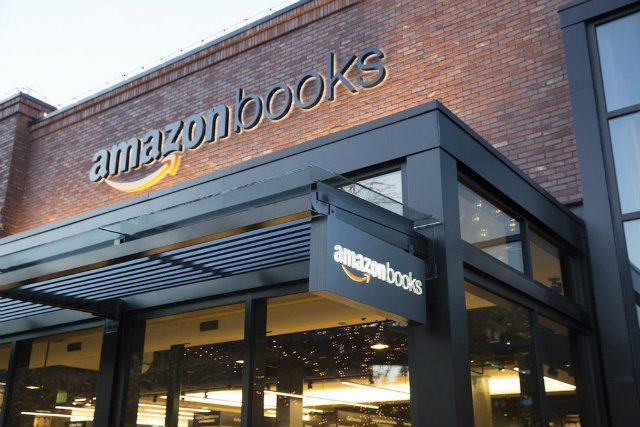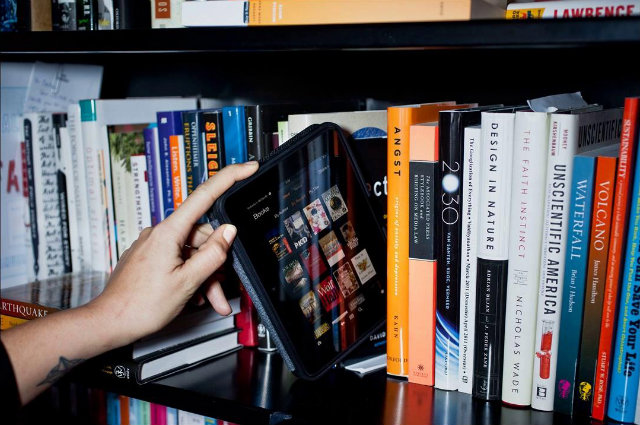
The bookstore is dead, long live the bookstore. As the years pass by, we hear endlessly sad premonitions about the imminent death of the physical books shop. Today, the entire retail industry is facing a digital revolution but somehow bookstores seem to lag behind.
When online shopping offers choice, competitive prices and constant availability, why should you care to search for an actual store? What happens for clothes, furniture and design, is even more true for music, movies and books. And their only chance to survive could be the digital customer experience.
The experience has always been a huge part of retail success in the past decades. The very idea of a ‘favorite brand’ in customers’ mind has always been related to a sense of participation of people in peculiar values and narrative. The purchase decision, however, was ultimately influenced by external factors such as quality, price, advertising.
Then, the Internet came in and opened the business competition to the global arena: with the avalanche of E-Commerce firms, the traditional marketing levers have lost a great part of their appeal. In digital markets, the customer is the core of any business strategy, and the experience the key to create genuine engagement and loyalty.
Innovative brands are already at work to change the whole idea of customer experience, from something abstract and generic to something immersive and personal(ized). While other retailers are evolving to adapt - implementing tech innovations in their customer journey - bookstores are failing to accomplish this task.
We can highlight three main trends in this evolving scenario:
- The growth and expansion of digital retailers, that have made book selling a worldwide competition, based on the quality of service more than the catalogue.
- The arise of e-books, that are replacing printed ones, offering exclusive benefits: they are cheaper, easy to carry along and more immersive with extra features.
- The revival of audio books, formerly known as books on tape: the most unlikely challenger that is outselling paper books and is set to compete with e-books.
Statistics say that digital books are expected to outsell print titles by 2018 (at least in U.S. and U.K.), but it does not mean that printed books are destined to disappear anytime soon - and bookstores with them.
Books and ebooks are not necessarily enemies: they are different and can work together to help editors and authors survive the digital transformation. The same way, shelves and new technologies can work together to reinvent the store as we know it. In the name of the experience.

Is it true that an innovative digital customer experience could revamp the future of retail bookstores? Recently, we have witnessed something unexpected and - in many ways - pivotal: Amazon’s decision to open its first brick-and-mortar store in Seattle, an interesting example of business development that also tells a much more interesting story.
Many analysts have seen this move - in a simplistic way - as the extreme attempt by the E-Commerce giant to kill the competition in both digital and physical worlds. On the contrary, we see it as the demonstration that the retail store is not doomed; it just needs to evolve, embracing the technological disruption to involve customers in more meaningful ways. It is the same lesson that Starbucks has taught to any single coffee retailer out there.
To remain successful, retailers must improve the experience of buying books. They have to stop refusing innovation and review their entire marketing funnel. Just like any other company involved in the digital age, they have to find new methods to engage and monetize digital customers, delivering compelling experiences in any moment of truth.
The inebriating smell of paper alone will not help them to compete with the giants of digital commerce. In a world redesigned by mobile devices and social networks, there must be something more: a whole new customer experience, easy, amazing and powerful.
The connection between the experience and the future of retail is everlasting. You ‘just’ need to find a way to convey it in a unique, exclusive branded essence.
Here are few ideas book shops should consider to use disruptive technologies to win the challenge of digital darwinism.
IMPROVE DIGITAL PRESENCE
Small and indipendent bookstores usually think that they do not need a digital presence. The reason is that they mistake digital with E-Commerce. When the smartphone becomes the first screen, there is no business strategy without ‘digital’, even when you do not want to sell books online.
As stated in a recent research by Google about Micro Moments, we find out that ‘Near Me’ searches have grown 2x in the past year. You need to be there when people are looking for a local business or are considering buying at a local store. And ‘being there’ means a strong online, mobile, and social presence to connect the digital life to the physical world.
PROMOTE LOYALTY AND RETENTION
Retaining a customer is 6x cheaper than acquiring a new one. Customer retention is one of the key factors of an healthy business growth. It is a fact. But how can you convert random users into loyal customers? When you connect with empowered customers, you cannot rely on traditional fidelity cards, offers and discounts.
That is old times engagement that will never work in the ‘membership era’. What you need to do is to set-up a strategy that encourages customer engagement; to tranform existing clients into brand advocates; to focus on different dynamics of in-store and mobile involvement (beacons, push notifications, contextual contents, gamification).
CREATE A PERSONAL JOURNEY
The personalization is the main trait of a successful marketing strategy. No bookstore can live without shelves, a critical touch point of the retail customer journey, both in the digital and physical worlds. Just, the shelves do not have to be necessarily tangible. They could also be 'tappable'.
In the mobile era, though, there are many more points of contact that you must involve in your journey map. Attraction, engagement and delight happen in-store and - more often - online. The personalization of the shopping experience (through creative contents and tech applications) is the only way to stay relevant: the book store is not only a place where books are sold.
BUILD THE NEW (DIGITAL) STORE
Every path described till now brings to one inevitable conclusion: to survive the retail revolution, the book shop must to be reinvented. This is not just a suggestion, this is the rule. Even the digital presence is important but not enough to engage digital customers and convince them to buy.
The old dusty shops are fascinating but not ineffective. Technology - the one they fear so much - is the only life vest: multimedia interfaces that allow for digital purchasing, reading and other sensory experiences; the Internet of Things; with interactive shopping windows; digital shelves; augmented reality and 3D environments to boost the customer experience.
The bookstore is dead, long live the bookstore.
To help you provide a strategic advantage to your organization, Neosperience has crafted the first DCX 7-Steps Checklist, with requirements and insights for a successful digital transformation. Download the free guide here:
Editor's Note: This post was originally published in November 2014 and has been revamped and updated for accuracy with the latest trends and advancements of mobile technology and retail customer experience.



 Your magnifing glass to deeply understand your users and increase the value of each relatonship.
Your magnifing glass to deeply understand your users and increase the value of each relatonship. Listen to the voice of your customers deeply to understand what they truly want.
Listen to the voice of your customers deeply to understand what they truly want. The Lead Generation Platform to get leads from anonymous traffic on your website.
The Lead Generation Platform to get leads from anonymous traffic on your website.  Understand the behavior of people in physical spaces and monitor safety requirements.
Understand the behavior of people in physical spaces and monitor safety requirements. The Digital Commerce Platform designed to follow the most modern technological standards..
The Digital Commerce Platform designed to follow the most modern technological standards.. The XReality platform to tell brand and product stories by connecting physical and digital worlds.
The XReality platform to tell brand and product stories by connecting physical and digital worlds. Points, rewards, levels, badges, missions: a world of nudges to nurture your customer community.
Points, rewards, levels, badges, missions: a world of nudges to nurture your customer community. Discover all the other solutions!
Discover all the other solutions!









